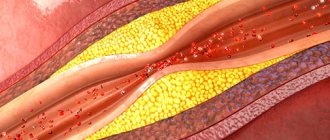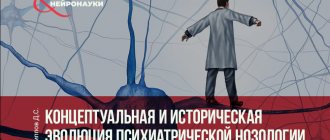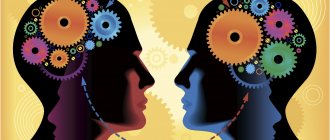- Right and left hemispheres - what is the difference?
- How to develop the left hemisphere
- How to develop the right hemisphere
- Development of interhemispheric interaction
Despite the desire of parents for the comprehensive development of children, in the modern world the balance is often upset. The school system pays more attention to the left hemisphere. And many alternative education systems, on the contrary, try to “pump up” the child’s creative direction as much as possible, forgetting about the need to develop logical and analytical thinking. The imbalance occurs in any case, and the important task of parents is to eliminate it.
How the brain works
It is known that the human brain consists of two hemispheres - right and left. The left hemisphere is analytical, it is responsible for our speech, ability to read and write, with its help we remember dates and numbers, mathematical symbols. The right hemisphere processes information as a whole, in images, it allows us to dream, fantasize, compose stories, it thinks creatively and allows us to solve a problem entirely, intuitively, without breaking it down into stages.
American neuropsychologist Roger Sperry, who was awarded the Nobel Prize for his work, was engaged in brain research. He discovered that each hemisphere of the brain functions as an independent brain. That is, the task proposed to a person is solved either by the left hemisphere or the right. Thus, if the left hemisphere with its analytical thinking rejects drawing, then this task must be offered to the right, creative, hemisphere.
Causes of left hemisphere stroke
There are many different prerequisites for the development of left-sided stroke. Predisposing factors include:
- endogenous causes;
- exogenous factors.
The second category includes the patient's conditions and lifestyle. Endogenous causes are represented by the immunological characteristics of the body, heredity, age and gender of the person.
The most likely causes of the development of the disease on the left side of the brain are:
- diabetes;
- cardiovascular diseases;
- vein thrombosis;
- disorders of the blood composition and blood diseases that increase its viscosity;
- alcohol abuse, smoking;
- improper diet;
- uncontrolled use of hormonal, vascular and contraceptive drugs;
- frequent dizziness and migraines;
- osteochondrosis of the cervical spine;
- obesity;
- vegetative-vascular dystonia;
- sedentary lifestyle, insufficient physical activity
The main idea of right-hemisphere drawing
How can one still shift the artistic task from the left to the right hemisphere and won’t it also object)))? American teacher Betty Edwards devoted herself to this issue. Betty taught and did research at California State University. The result of her work was the book “Discover the Artist in You.”
According to research by Betty Edwards, the main idea of right-hemisphere drawing is this: in order to draw well, you need to learn to switch to a special right-hemisphere vision mode. Drawing is not difficult. The main problem is the ability to see, or rather, the transition itself to the “special vision” mode. Initially, it seems that we see objects very clearly, but the problem is precisely to draw this object realistically. But! It turns out that the opposite is true! In other words, a person already knows how to draw, but old habits of perception prevent this ability from manifesting and block it.
In her book, Betty Edward compares learning to draw to learning to ride a bicycle. It seems that everything is simple: you sit on a bicycle, pedal, keep your balance and go! But in practice this does not work the first time; you need to try once and twice until you can coordinate all the movements. It’s the same with drawing: you need to take a pencil and just draw what you see, you just have to learn to “see” correctly.
With the help of some exercises, you can develop this ability to “see” like an artist, and, consequently, to draw! So Betty Edwards suggests:
— Hang a picture upside down in front of you and try to draw it. The left hemisphere cannot cope with this task, since it does not understand what to draw, it is accustomed to working with specific signs, so the right one comes into play.
— Try to draw an ambiguous picture, like a vase-face. This also helps to learn how to work with images, to draw what you see (a line, a curve), and not “break it down” into components (forehead, nose, lips).
- Draw a negative - that is, what we would see if we took a photograph of the picture and looked at the negative. Or in another way it is called “drawing empty space”: that is, we draw not the object itself, but the space that surrounds it. It also teaches you how to work with images.
In general, the book contains a number of sequential exercises that step by step reveal the capabilities of the right hemisphere.
Many teachers, psychologists and artists became interested in Betty’s technique, each developing it in their own way and offering their own methods. Modern psychologists also offer their exercises and techniques at seminars and trainings.
For example:
- Draw beyond the paper. This is a special exercise: by going beyond the boundaries of paper, a person goes out of his framework, which limited him and interfered with creative development.
- Draw with your hands. In the process of such creativity, a person seems to become a child, showing his spontaneity and individuality.
Who is it useful for?
For children. Children are initially right-hemisphere. They perceive the world as it is - bright, colorful and interesting, which is why they are such visionaries and dreamers. And later the child develops analytical thinking. Children break everything down and learn letters and numbers. The traditional school system is also more focused on the development of the left hemisphere - children read textbooks, write in notebooks, make tables and graphs. Therefore, to prevent the right hemisphere from getting bored, you can draw using this method.
Creative people. It often happens that a talented person manifests himself in more than one form of art. Everything is natural: when learning to draw, a person develops the right hemisphere, and the creative hemisphere strives to express itself somewhere else.
Businessmen. These people, by the nature of their profession, constantly need to solve non-standard problems, and sometimes the entire success of the business depends on the originality of the idea, so that, having opened up in painting, the brain will be able to intuitively find the right solutions in business.
And for all those who are interested in trying something new, develop their hidden abilities.
How children learn to draw
Betty Edwards carefully studied and observed how children learned to draw. Here's what she found.
Around one year old, children begin to master the first “doodles” with pleasure, chaotically moving a pencil or brush across the paper. And this gives them great pleasure.
Drawing of a 1.5 year old child
By the age of two, the child begins to realize that his drawing can represent something that exists in the real world. So, for example, a circle is drawn, two dots-eyes are added, a stick-mouth is added and you get a mother. In this way, the child begins to develop his own symbol system. Using the same symbols, the child himself, dad (only bigger), mom (long hair is added), grandmother (glasses are added), etc. are drawn. The little artist draws similar pictures day after day, honing his own symbols.
Drawing of a 4 year old child
Around 4-5 years old, the child begins to master landscapes in which the same house with a window and door is also repeated day after day; traditional earth - green stripe at the bottom of the picture, sky - blue stripe at the top, sun, tree. Then the girls begin to draw princesses and fairies, and the boys begin to draw transport and superheroes. At the age of 10-12 years, a child develops a craving for realism, a great desire to draw an object as it really is. Those who fail to do this simply lose interest in drawing and in adulthood their ability to draw remains at the level of a 12-year-old child. The other part of the children still develop the ability to “see” an object like an artist and achieve success in drawing.
Thus, when an adult is asked to draw something on paper, he turns to the symbol system developed in childhood and stored in the left hemisphere. A person only glances briefly at the object and begins to “give out” familiar symbols on paper: here is a symbol for the eye, here for the nose, and here are the lips. How to resolve this dilemma? Psychologist Robert Ornstein argues that in order to paint, the artist must reflect objects like a mirror, perceiving them exactly as they are. Thus, we must turn off the dominant mode of the left hemisphere and trust the other, artistic and creative side of the brain.
Everyone can draw. You just need to stop thinking and analyzing your actions during the process, and just immerse yourself in the creative process))))
How does a child's brain work?
As we have already said, children are initially right-hemisphere. Until about 2 years of age, a child’s right hemisphere dominates, which is why children are so inquisitive - they want to explore, touch, try everything. Then the left hemisphere comes into play - first speech develops, then the ability to write, read, and count. At this time, it is very important to maintain a balance in the child’s development: while teaching early reading, writing, and counting (development of the left hemisphere), one should not forget about the development of creative abilities (right hemisphere). Otherwise, the left hemisphere becomes dominant and simply blocks the work of the right, so a person can no longer fully open up and realize all the possibilities that were originally laid down by nature.
Prognosis for treatment of left hemisphere stroke
Stroke is a dangerous and complex disease. Unfortunately, no doctor can give an accurate prognosis regarding the patient’s recovery. The success of rehabilitation primarily depends on the timeliness of assistance and initiation of treatment.
Regarding the duration of the recovery period, the following factors must be taken into account:
- size of the lesion;
- presence of emotional disorders;
- the age of the person who experienced a left-sided stroke - the older the patient, the more difficult it is for him to recover;
- deterioration of mental abilities;
- localization of the lesion.
The intensity of stroke development is also of great importance. With a favorable course of the disease, when the patient regains consciousness after a few minutes or hours, the likelihood of complete restoration of lost functions is quite high. The compressed development of the disease is more dangerous, as there is a risk of repeated vascular rupture. However, in this case, most of the functions are restored. A progressively severe variant of the development of the disease is characterized by the fact that a person comes to his senses more than three days after the stroke. In this situation, symptoms rapidly increase and there is a high chance that the patient will receive lifelong disability.
The prognosis for life after treatment for a left hemisphere stroke is individual for each person. However, timely treatment, compliance with doctor’s recommendations, a healthy lifestyle, as well as a reduction in emotional distress help speed up the recovery process.
How to draw with your child
Of course, in order to competently guide young talent and give tactful advice, working with a child requires a sensitive psychologist, an experienced teacher and a talented artist all rolled into one. At first, mom will do an excellent job with this role.) Here are a few exercises that stimulate the work of the right hemisphere.
* Drawing imaginary objects. Before you draw something, invite your child to dream up. It is advisable to imagine something that he has not seen in reality: a fabulous animal or a fantastic flower; your future profession or even your name. Discuss with him the color, smell, taste of the object, what it feels like, what sounds it makes. Only after the child’s imagination “runs wild” should you invite him to draw an imaginary thing.
* Mirror drawing. Take a blank sheet of paper and two pencils - one in each hand. Invite your child to draw mirror-symmetrical drawings (or letters, if the child is already familiar with them) with both hands at the same time. When performing this exercise, both hemispheres are involved, which improves the efficiency of the entire brain.
Example of mirror-symmetrical patterns
* Drawing on colored paper. Offer your child several multi-colored sheets; the child himself must choose on what background he wants to draw. The very process of choosing a colored sheet already excites the imagination, activates work with images and associations, i.e. “turns on” the right hemisphere.
White animal on a black background. Black color for children is not gloomy, but interesting, as children choose it based on contrast
* Drawing with the other hand. If the child is right-handed, then it is worth offering him, as an experiment, to draw with his left hand (for left-handed people, on the contrary, with his right hand). Firstly, it uses new parts of the brain, and secondly, it’s just fun!
Consultation for parents “Developing the right hemisphere of the brain”
Pyshina Alexandra Alekseevna
Consultation for parents “Developing the right hemisphere of the brain”
Dear parents !
As you know, our brain consists of two hemispheres : left and right , to each of which there are nerve pathways from the senses and from all organs that have sensitivity (for example, pain or tactile - tactile)
.
In this case, the right hemisphere mainly “serves” the left side of the body: it receives most of the information from the left eye, ear, left arm, leg, etc. and transmits commands accordingly to the left arm, leg, and the left hemisphere serves the right side .
The main difference between the left hemisphere and the right is that only the speech centers are located in it and the processing of all information entering the left hemisphere occurs with the help of verbal-sign systems. The left, as it were, splits the picture of the world into parts, into details and analyzes them, building cause-and-effect chains, classifying all objects, building diagrams, consistently going through everything that falls into the sphere of its perception or is retrieved from memory. This takes time; the left hemisphere acts relatively slowly. The right hemisphere , in which there are no centers of speech, grasps the picture of the world holistically, simultaneously including all concrete reality into consideration, not breaking it into parts, but synthesizing the whole image in the totality of its specific manifestations. It specializes in processing information that is expressed not in words, but in symbols and images. The right hemisphere acts quickly .
Thus, the left hemisphere can be called analytical, classification, abstract, algorithmic, sequential, inductive. We can say that the left hemisphere is characterized by rational-logical, symbolic thinking.
The right hemisphere corresponds to such characteristics as holistic, synthetic, concrete, heuristic (from the word “eureka!”), parallel (simultaneous, not sequential, deductive. It is also called emotional. It is characterized by visual-figurative, intuitive, creative thinking.
The left hemisphere is responsible for our reading and writing abilities. The right hemisphere gives us the ability to dream and fantasize. With the help of the right hemisphere we can create different stories. The right hemisphere is also responsible for abilities in music and the visual arts.
Usually one of the hemispheres in a person is dominant, which is reflected in the individual properties of the personality. For example, left-hemisphere people are more drawn to science. Right-hemisphere people are more eager to engage in art, or areas of activity that require individual imaginative solutions. The vast majority of great creators - composers, writers, poets, musicians, artists, etc. - are “ right-brain ” people.
All modern civilization is predominantly left-hemisphere . -brain dominant people . Unfortunately, most people ignore the innumerable possibilities hidden in the right half of the brain . There is still an underestimation of the importance of intuition and intuitive knowledge.
At first, the child is a pronounced right-hemisphere creature , but gradually the left hemisphere of the brain (primarily speech) pass to it.
.
In this regard, a few words about early childhood education, which is becoming increasingly fashionable. Is it always justified? Perhaps in this case such an important principle of education as timeliness is violated. Tatyana Vezel in her article “Left-handedness – is it good or bad?” (Motherhood magazine)
writes: “Recently, the fashion for early education has been gaining momentum.
Parents compete to demonstrate their children's ability to read, write and count. By vigorously encouraging early activity of the left hemisphere , they literally rape children, stimulating its activity, even if this activity is not present.
If the right hemisphere manages to accumulate the necessary baggage before the victory of the left, then everything is in order. If not, then the left-hemisphere tilt can “block” the right brain , leaving the psyche of this person forever impoverished. It will be more difficult for him to become himself, and therefore a unique, inimitable creation, which all people were originally intended to be.”
So the early development of children has not only advantages, but also disadvantages. But these “disadvantages” can be avoided if you strive to ensure that both hemispheres of the child’s brain work harmoniously. And for this we need precisely harmonious development , without a narrow specialized focus , which means it is necessary to deal not only with the development of the child’s intellect , but also with his emotional and physical development .
The benefits of harmonious functioning of the brain hemispheres are enormous . This is a kind of key that allows you to open the door behind which a person’s enormous potential is hidden.
There are also special exercises aimed at developing the right hemisphere . We will describe some of them here.
1. Visualization exercises.
When you have a free minute, sit your child next to you and invite them to dream up a little.
Let's close our eyes and imagine a white sheet of paper with your name written in big letters. Imagine the letters turning blue. And now - red, and now - green. They may be green, but the sheet of paper suddenly turned pink, and now yellow.
Now listen: someone is calling your name. Guess whose voice , but don’t tell anyone, sit quietly. Imagine that someone is chanting your name while music is playing around you. Let's listen!
Now we will touch your name. What does it feel like? Soft? Rough? Warm? Fluffy? Everyone's names are different.
Now we will taste your name. Is it sweet? Or maybe with sourness? Cold like ice cream or warm?
We learned that our name can have a color, a taste, a smell, and even feel something.
Now let's open our eyes. But the game is not over yet.
Ask your child to talk about his name and what he saw, heard and felt. Help him a little, remind him of the task and be sure to encourage him: “How interesting!”, “Wow!”, “I would never have thought that you had such a wonderful name!”
The story is over. We take pencils and ask them to draw a name. A child can draw whatever he wants, as long as the drawing reflects the image of the name. Let the child decorate the drawing and use as many colors as possible. But don't delay this activity. It is important to finish drawing at a strictly defined time. At this point, you decide for yourself how much time to spend on drawing - a slow baby needs about twenty minutes, and a “hurry child”
will draw everything in five minutes.
The drawing is ready. Let the child explain what these or those details mean and what he tried to draw. If it is difficult for him to do this, help: “What is this drawn? And this? Why did you draw this particular one?”
Now the game is over, you can rest.
You probably guessed what its essence is. We took the child through all the senses: sight, taste, smell, and forced him to engage in activities both imagination and speech. Thus, all areas of the brain had to take part in the game.
2. Now you can come up with other games based on the same principle. For example: “Name-flower” - we draw a flower that we could call by our name; “I’m an adult” - we try to imagine and draw ourselves as an adult (how I’ll dress, how I speak, what I do, how I walk, and so on)
; “Imaginary gift” - let the child give imaginary gifts to his friends, and tell you what they look, smell, and feel like.
You are stuck in a traffic jam, have a long train ride, are bored at home or in line at the doctor - play the suggested games. The kid is delighted and does not whine: “I’m bored, when will it finally happen. “, and the parent’s heart rejoices - the child is developing !
We offer you another visualization exercise called “Erasing stressful information from memory.”
Invite your child to sit, relax and close his eyes. Let him imagine in front of him a blank album sheet, pencils, and an eraser. Now invite your child to mentally draw on a piece of paper a negative situation that needs to be forgotten. Next, ask, again mentally, to take an eraser and begin to consistently erase the situation. You need to erase until the picture disappears from the sheet. After this, you should open your eyes and check: close your eyes and imagine the same sheet of paper - if the picture does not disappear, you need to mentally take the eraser again and erase the picture until it disappears completely. It is recommended to repeat the exercise periodically.
2. “Ear-nose.” With our left hand we take hold of the tip of the nose, and with our right hand we take the opposite ear, i.e. the left one. At the same time, release your ear and nose, clap your hands and change the position of your hands so that the right one is holding the tip of the nose, and the left one is holding the opposite ear, i.e. the right ear .
3. "Ring". We move our fingers one by one and very quickly, connecting the index, middle, ring, and little fingers into a ring with the thumb. First, you can do it with each hand separately, then with both hands simultaneously.
4. “Mirror drawing.” Place a blank sheet of paper on the table and take a pencil. Draw mirror-symmetrical designs and letters with both hands at the same time. When doing this exercise, you should feel your eyes and hands relax, because when both hemispheres , the efficiency of the entire brain .
By the way, when you do something with both hands at the same time, for example, play a musical instrument or even type text on the keyboard, both hemispheres . So this is also a kind of training. It is also useful to perform familiar actions not with your dominant hand, but with the other. That is, right-handers can live the life of left-handers, and left-handers, on the contrary, can become right-handed . For example, if you usually brush your teeth with the brush in your left hand, then periodically switch it to your right . If you write with your right hand , switch the pen to your left. It's not only useful, but also fun. And the results of such training will not take long to arrive.
5. And finally, another fun exercise for children who already know how to read well.
Looking at the picture, you need to say out loud as quickly as possible the colors in which the words are written.









